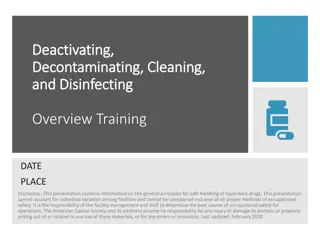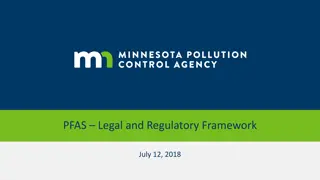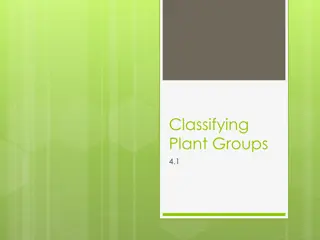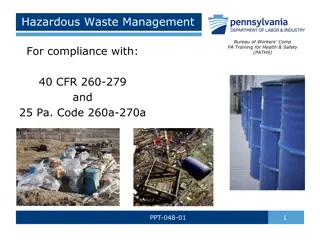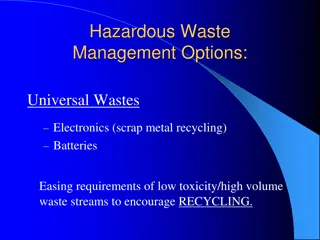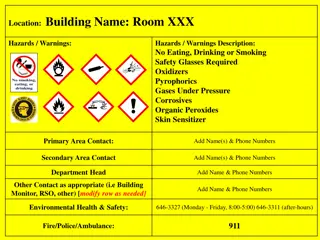Hazardous Plants Identification and Safety Guide
Explore the five main hazardous plants found in and around Peterborough County, including stinging nettle, poison ivy, poison sumac, wild parsnip, and giant hogweed. Learn about their distinct features, hazardous parts, symptoms of contact, and safety precautions. Discover how to identify these plants and what to do if contact occurs, along with the necessary personal protective equipment (PPE).
Download Presentation

Please find below an Image/Link to download the presentation.
The content on the website is provided AS IS for your information and personal use only. It may not be sold, licensed, or shared on other websites without obtaining consent from the author.If you encounter any issues during the download, it is possible that the publisher has removed the file from their server.
You are allowed to download the files provided on this website for personal or commercial use, subject to the condition that they are used lawfully. All files are the property of their respective owners.
The content on the website is provided AS IS for your information and personal use only. It may not be sold, licensed, or shared on other websites without obtaining consent from the author.
E N D
Presentation Transcript
Hazardous Plants The following slides will discuss the five main hazardous plants found in and around Peterborough County These hazardous plants include: stinging nettle, poison ivy, poison sumac, wild parsnip and giant hogweed Distinct features of plant as well as hazardous parts will be discussed In addition, PPE and what to do if contact with a plant occurs will be reviewed
https://encrypted-tbn2.gstatic.com/images?q=tbn:ANd9GcRpXvyf4i0XsNeUL0Kq2fedVswVEKWBtItyyJaQcsNW61ZxY7D7https://encrypted-tbn2.gstatic.com/images?q=tbn:ANd9GcRpXvyf4i0XsNeUL0Kq2fedVswVEKWBtItyyJaQcsNW61ZxY7D7 Stinging Nettle Poison Ivy Poison Sumac I.D. Features Leaves grow on opposite sides perpendicular to the ground Leaves are 10-15 cm in length and have jagged edges Plants grow to about one meter length Woody Stem with three pointed leaves Leaves may appear toothed or smooth edged Leaves are green in summer and red in the fall/spring time Leaves are 5-10 cm in length Leaves grow opposite on small stems Plants grow to 1-4 meters in height and are shrub like Hazardous Parts Stems and undersides of leaves have needle-like hairs Oil of the leaves, stems, and roots can cause an irritating rash to occur Oil is present on the surface areas of all these parts as well as throughout the plant Symptoms of Contact Contact with hairs cause skin irritation as well as a burning sensation to area affected Contact with oil can cause a rash and blisters to form Severe itchiness can also occur at these sites
http://www.nps.gov/voya/learn/nature/images/parsnip-closeup.jpghttp://www.nps.gov/voya/learn/nature/images/parsnip-closeup.jpg Wild Parsnip Giant Hogweed I.D. Features Leaves grow opposite each other and have a distinctive mitten shape Branching flower heads have small yellow flowers on them Plants grow to 1-1.5 meters in height Leaves grow opposite each other and are strongly toothed Stiff hairs grow on the stem of these plants Branching flower heads have small white flowers on them Plants grow to 3-4.5 meters in height Hazardous Parts Sap within the stems of the plant Symptoms of Contact Contact with sap can cause severe burns, blistering and irritation to skin with exposure to UV/sunlight If contact occurs with eyes it can cause temporary or permanent blindness These burns can lead to long term scarring and photo dermatitis
PPE and what to do if contact occurs PPE Long sleeved shirt Pants Closed toed shoes Gloves If contact with a hazardous plant occurs Wash the affected area with soap and cool water Wash all equipment and clothing Apply a cool compress Seek medical attention if reaction persists






